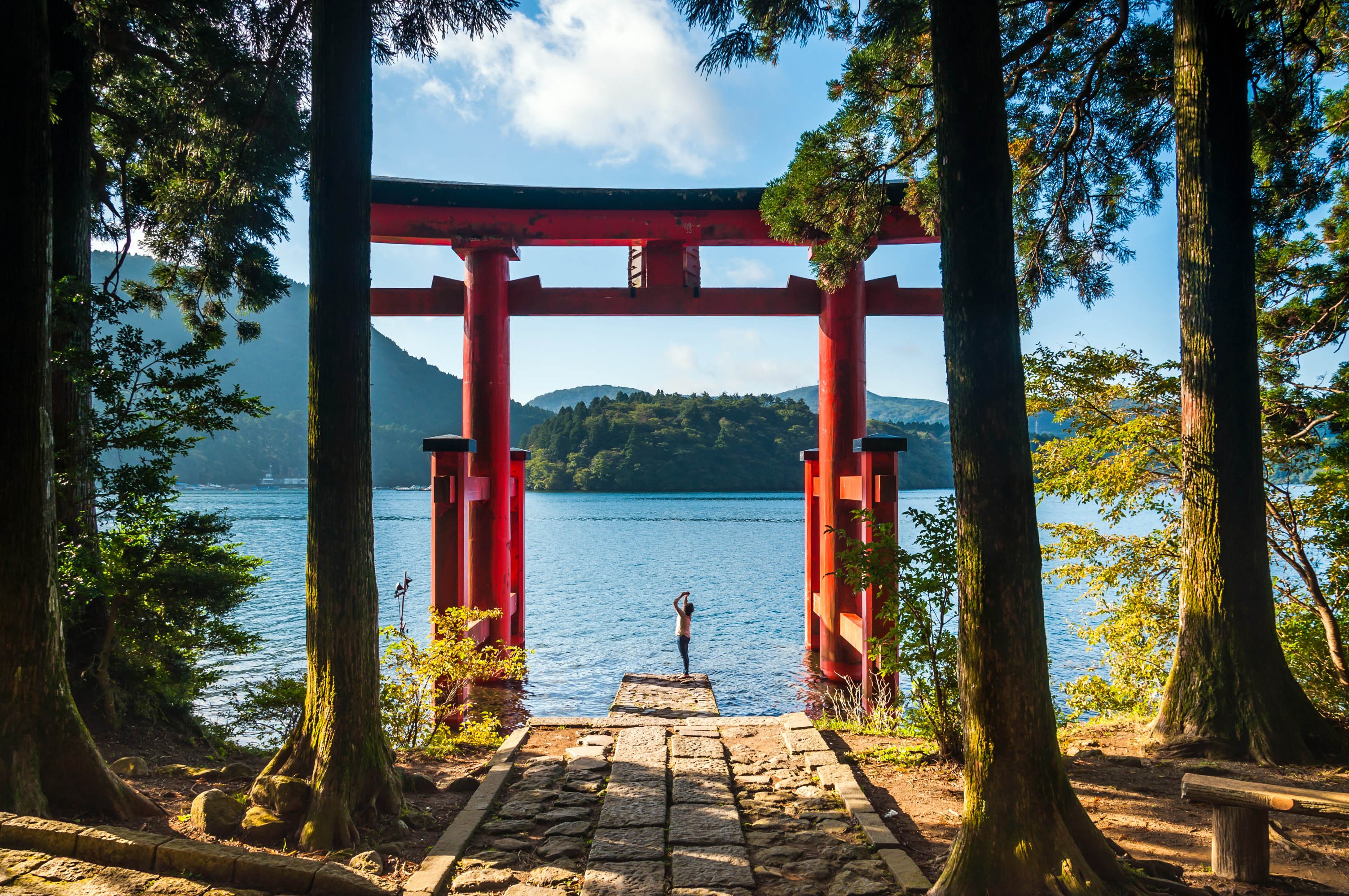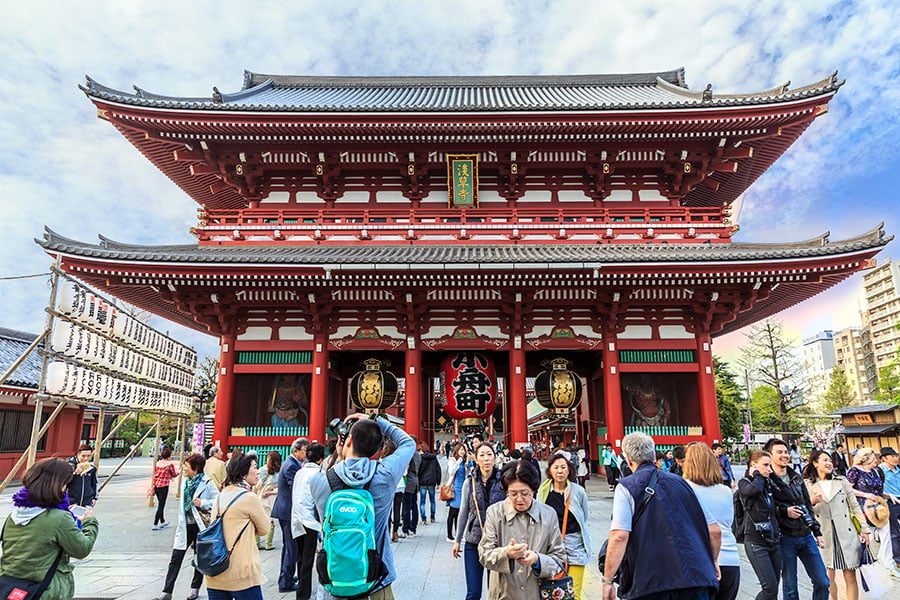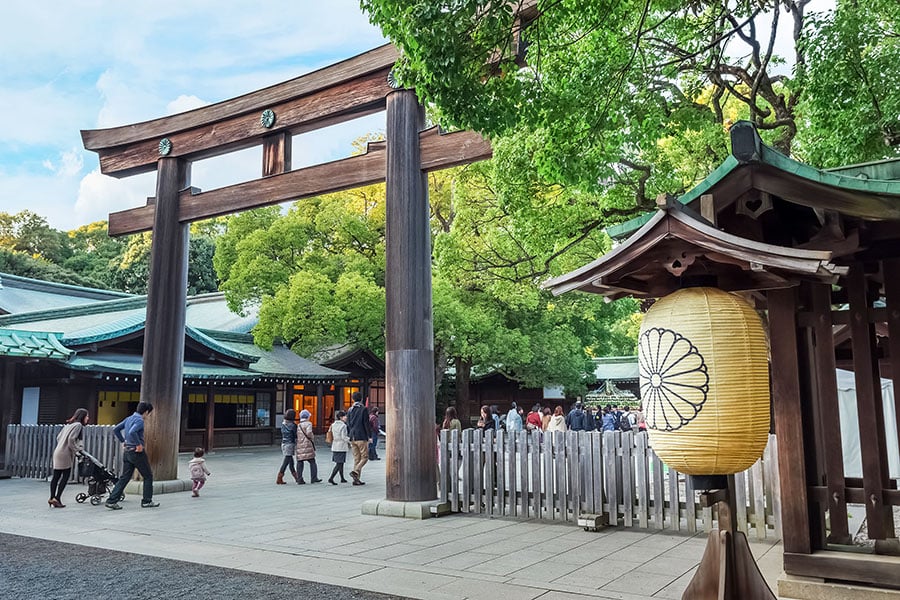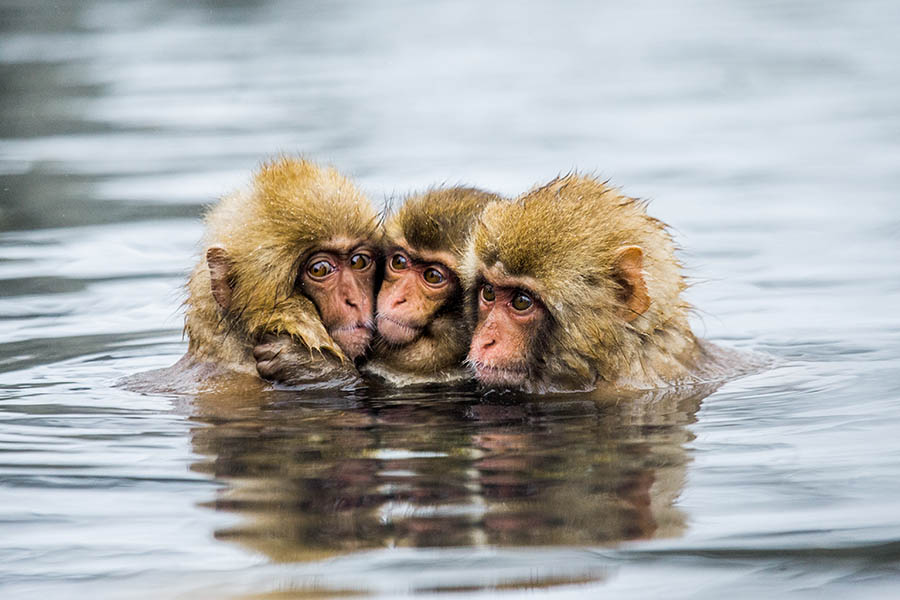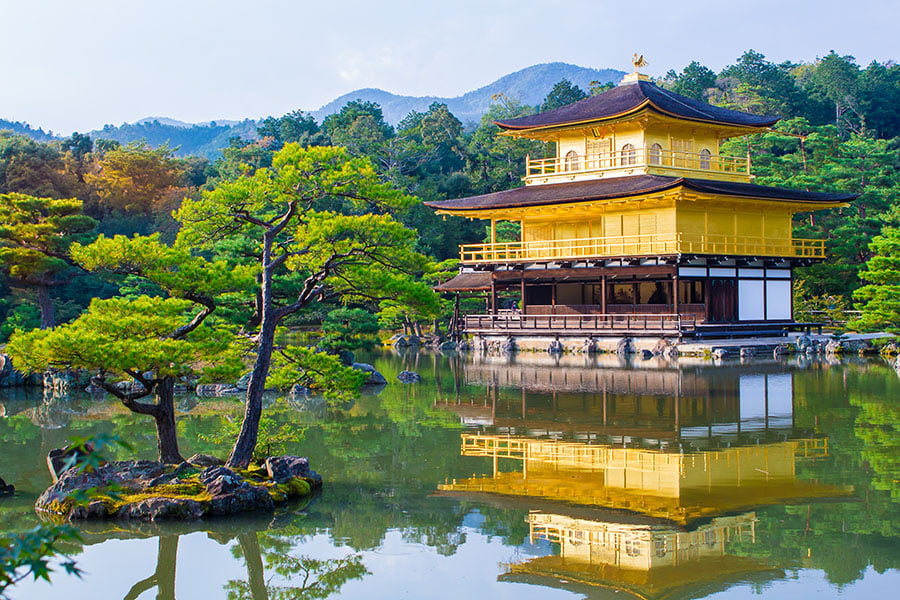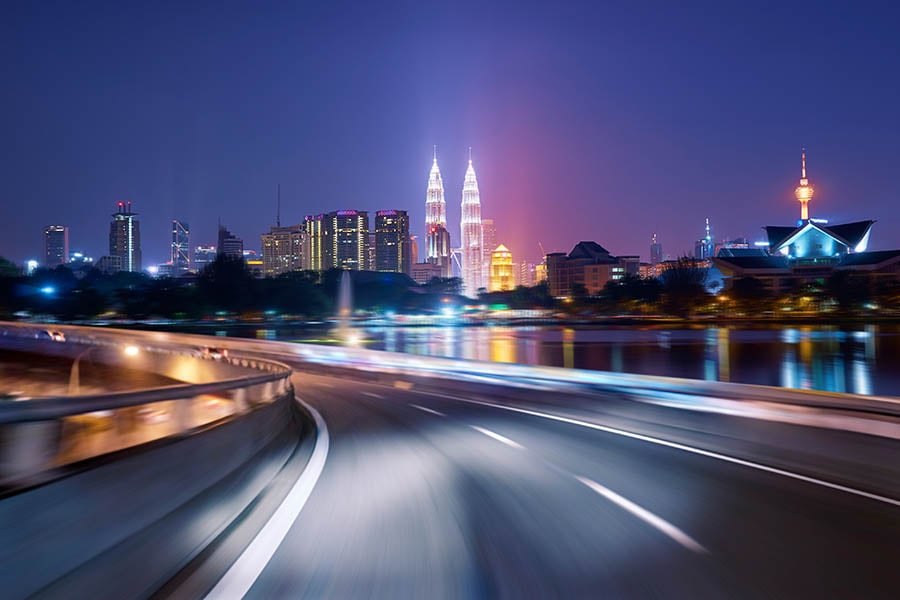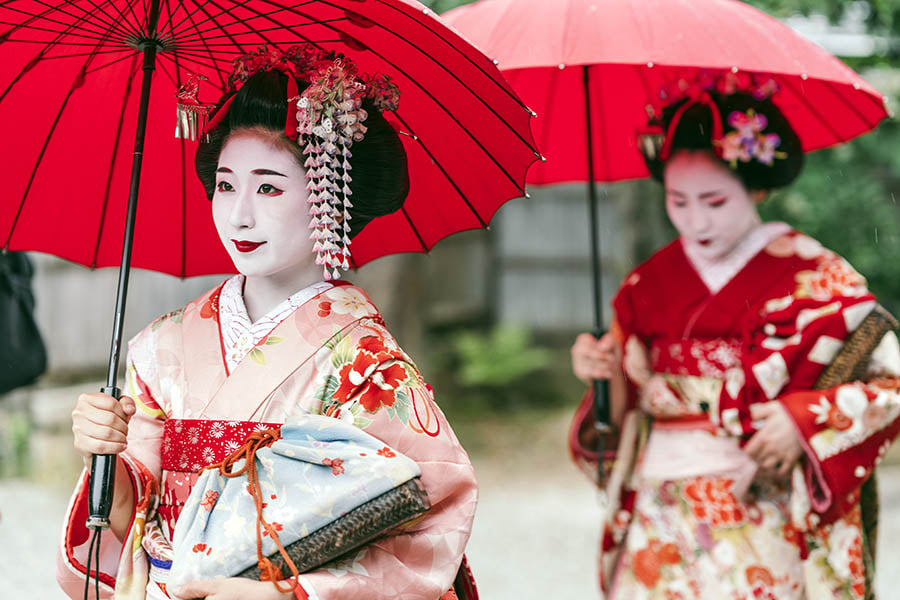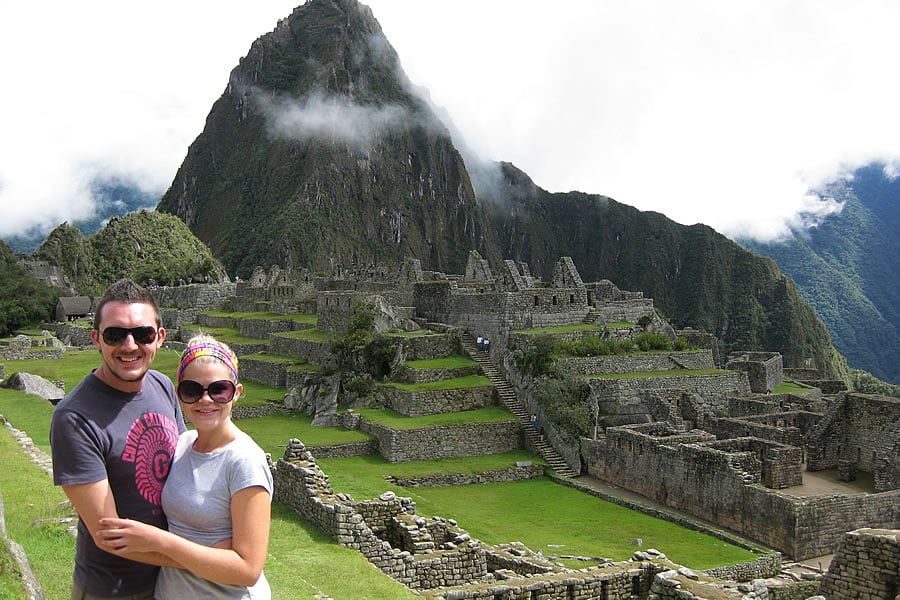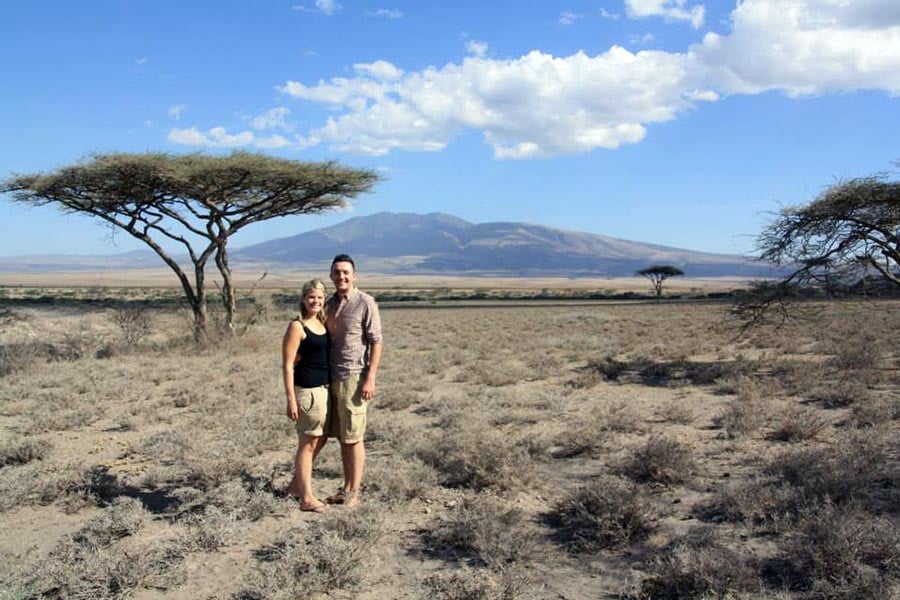Our 2 week trip to Japan with a baby
Japan had always been high on my list of places to visit, but I always viewed it as a little out of the way and very expensive (the latter, I learned, is certainly not true). However, I knew Japan would be a unique destination, quite unlike anywhere else in the world and I longed to visit.
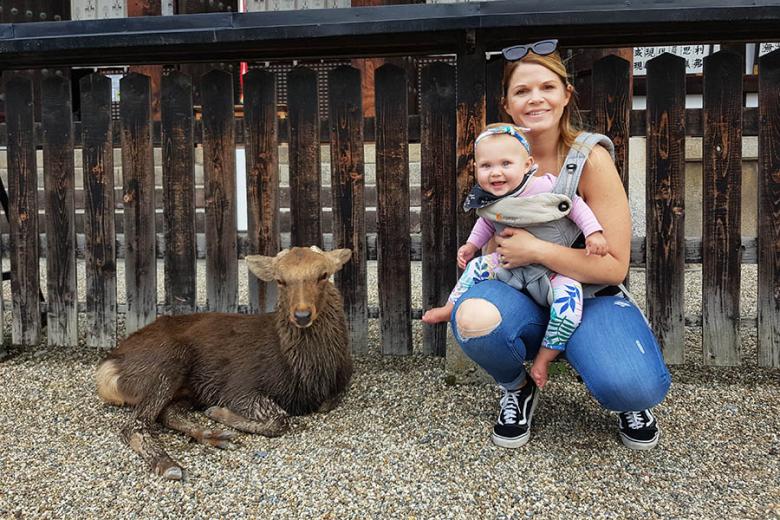
My wife is Australian, so we already had a trip planned to see the family with our 9-month-old daughter. On the way back, we wanted to visit somewhere new and exciting; a destination that was safe, clean and easy to travel around, and we felt Japan fitted that bill perfectly. Our brief itinerary was a few nights in Tokyo, one night in Hakone (near Mount Fuji), a few nights in Kyoto and one night in Osaka. Here are my practical tips and first-hand advice for a stress-free 2-week trip to Japan with a baby.
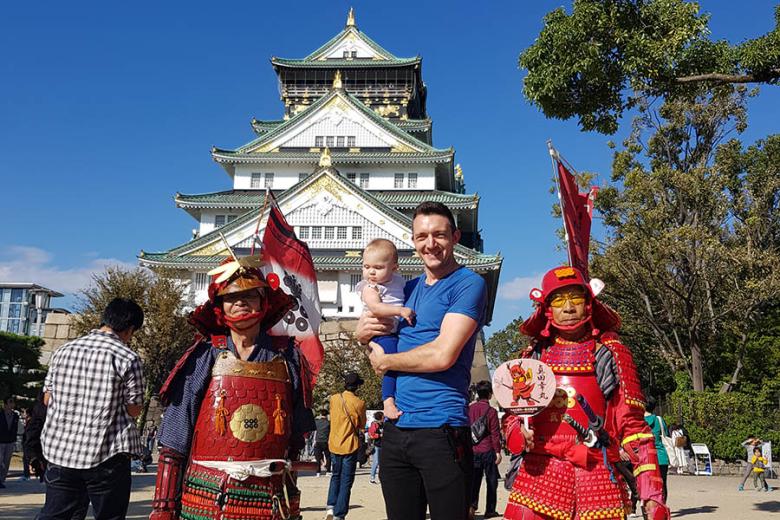
When to go
The summer months of June – August tend to get quite hot and humid in Japan, while the winter months can get very cold and snow is widespread, so neither is ideal when travelling with children. The best time to visit Japan is either Spring (March to May) or Autumn (September to November) when temperatures are mild, rainfall low and skies are generally clear.
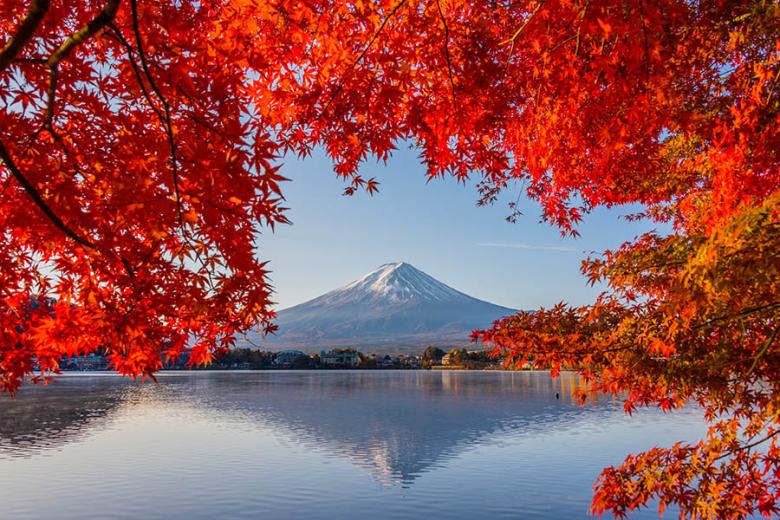
The highlight of visiting Japan in the spring is the chance to witness the cherry blossom season in full bloom. However, it’s a very popular time to visit and cities, historic sites, transport and accommodation can get very busy. We visited in October, which meant we got to enjoy lower prices and the beautiful colours that autumn brings.
Ideally, I’d have liked one full month to explore the whole country, but that wasn’t going to happen this time around. We had just under two weeks, which was still enough time to visit some of the main highlights at a relatively steady pace, which we felt was an important factor when travelling with a baby.
Organising your trip to Japan with a baby
The long-haul flights
In the past, we’d always travelled as a couple, so travelling with a 9-month-old was going to be a little different and require a little more planning. The first thing to think of was the flights; make sure you request bassinet seats and baby meals, as it’ll make life that little bit easier.
We found that flying overnight worked best for us, as our daughter managed to sleep quite well. The daytime flights were not so good, as she had a lot of energy and not a lot of space to expend it in. However, every baby is different and a long-haul flight is never going to be a ball, but the more you prepare for it, the better it’ll be for everyone. We bought a couple of brand-new toys to keep her occupied, just for the flights and we recommend taking onboard a baby carrier, so you can do laps on the plane without your arms falling off.
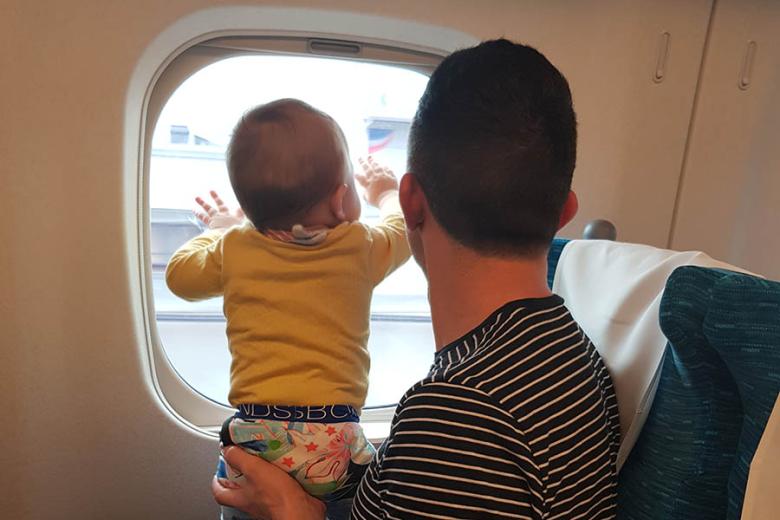
Choosing your accommodation
When booking accommodation, we looked at apartments with at least one separate bedroom, so you and the baby can have a little extra space. This made evenings (once the baby had gone to sleep) and early mornings (when the baby would hopefully still be sleeping) a little easier, meaning you didn’t disturb each other as much as you would if you all shared one hotel room.
Eating out
We anticipated that eating out and passing the evenings with a small person would bring their own difficulties. Our 9-month-old is used to going to bed at 7 pm, so we had to make some adjustments. When travelling as a couple, we’d tend to have a light lunch on the go and eat dinner out. This time, we made lunch our main meal of the day, meaning we didn’t need to go out for dinner, therefore making bedtime easier.
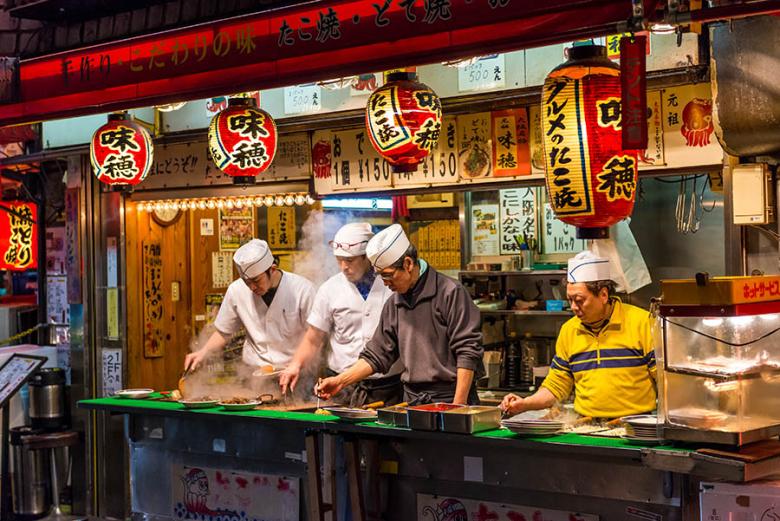
Be aware that smoking is permitted in many restaurants, so always ask for a non-smoking area if that’s what you need. Also, a lot of restaurants that serve alcohol don’t allow children, so always check when looking for somewhere to eat.
Travelling around
We didn’t have time to travel around much this time, so we bought individual train tickets when we needed them. However, if you’re planning to travel onto Hiroshima, up into the Japanese Alps, or to do a return journey between Kyoto and Tokyo for example, I’d definitely recommend booking a Japan Rail Pass as it will save you money. We can arrange this for you, just ask us for advice.
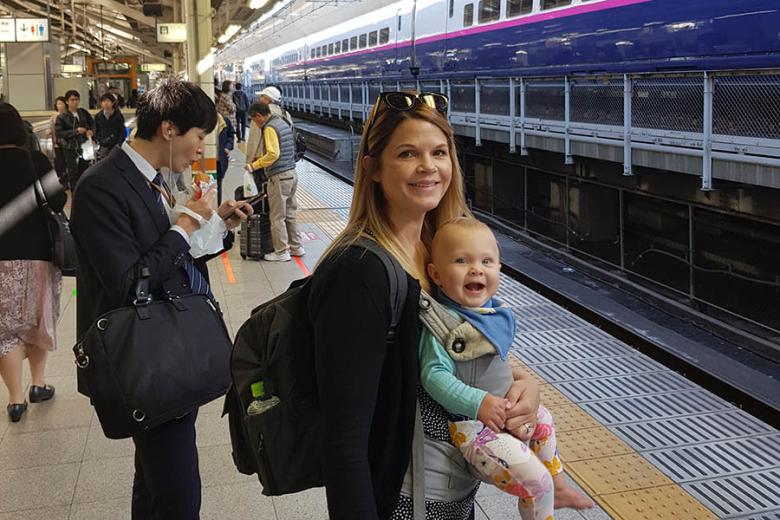
Baby changing facilities
Baby changing facilities are great and clean in Japan; however, there aren’t that many of them around. The main tourist attractions, large train stations and shopping centres are your best options.
If you have a pram or pushchair, be prepared to have to carry it at some metro stations, as you won’t always find lifts. Also, if needed, I would recommend taking a good supply of baby formula and nappies, as you might not find them everywhere, and options are limited when you do find some.
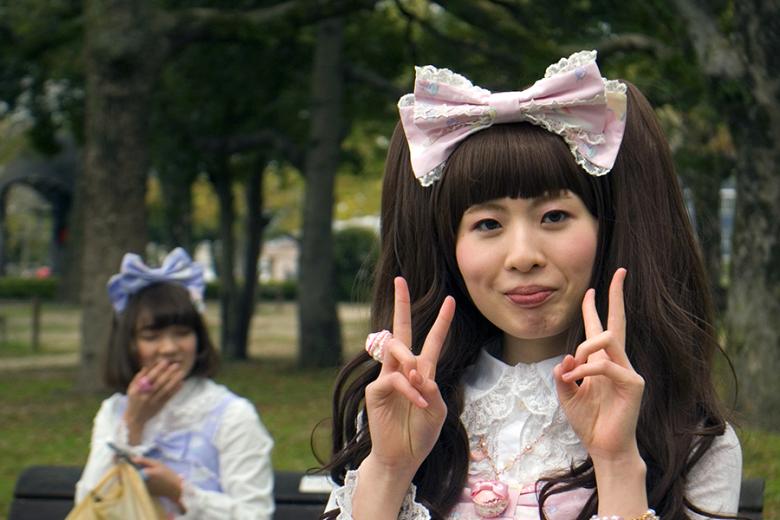
Tokyo
In Tokyo, we stayed in the centrally-located area of Ginza, which is one of the city’s main shopping districts and near the main train station. Also, it’s a little quieter than the more well-known areas of Shinjuku and Shibuya.
We had three full days, which is the bare minimum you need to see the main highlights the city has to offer. The subway and train network cover everywhere you’ll need to visit and are cheap, around £1 for a single journey or £4 for an unlimited day pass. Like most large cities, the main attractions are quite spread out, so we concentrated on different areas of the city each day.
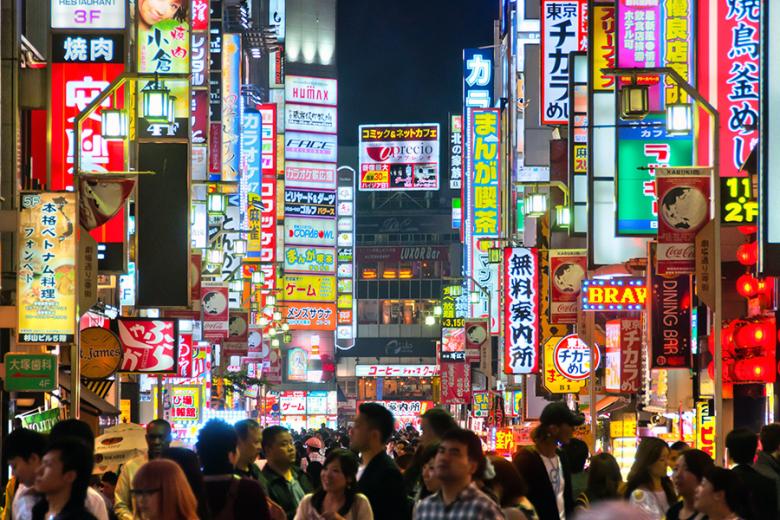
Shinjuku and Shibuya
On our first day, we visited Shinjuku and Shibuya which are to the west of the city. Normally these areas are best visited at night, so you can enjoy the bright lights and buzzing nightlife. Depending on how old your children are, you could still do this, but if they are very young, it’s probably best to visit during the day or early evening before bedtime. Yoyogi Park and the Meiji Jingu shrine in Shibuya are a welcome oasis amongst the hustle bustle of the surrounding streets.
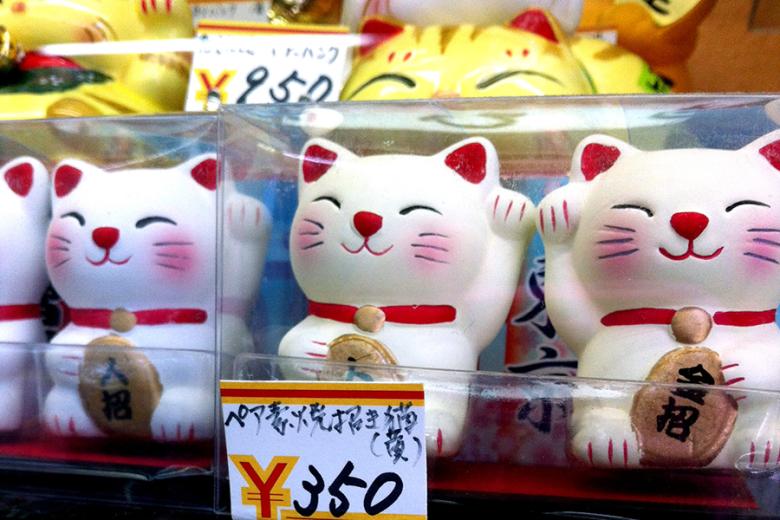
South Tokyo
The next day, we headed south to the Tsukiji fish market. The famous fish auction has now moved to a new location at the Toyosu Market, but the market area around Tsukiji is well worth a morning stroll and it’s a great place to enjoy fresh seafood. After the market, we did a little walking tour via the beautiful Hamarikyu Gardens, Shiba Park and finished off at the iconic Tokyo Tower.
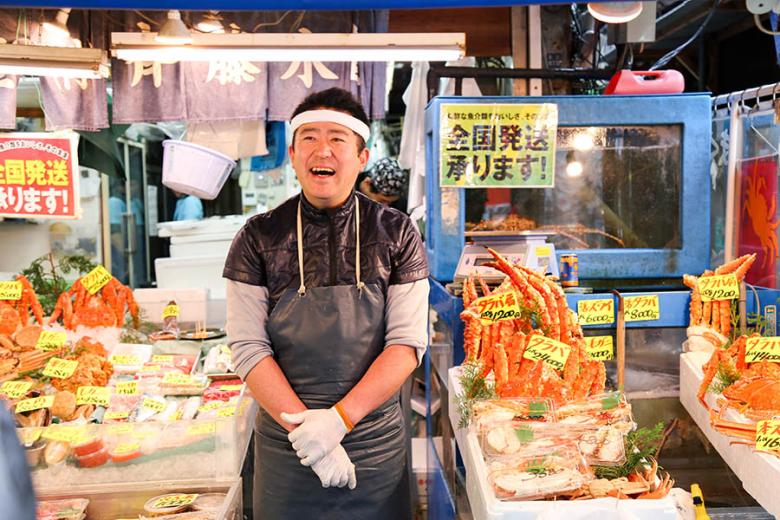
North Tokyo
On our final day, we headed north to the Tokyo Skytree observation tower (the second tallest structure in the world). It was a beautiful clear day, and in the distance, you could see the snow-capped peak of Mount Fuji – a classic view!
From the Skytree, we walked west to the old town area of Asakusa, where there are some great souvenir shopping markets and the historic Buddhist temple of Senso-Ji. We spent the afternoon in Ueno Park, which is a great place for kids, with a large boating lake, the National Museum of Nature and Science and best of all, the Ueno Zoo, where you’ll get to see pandas!
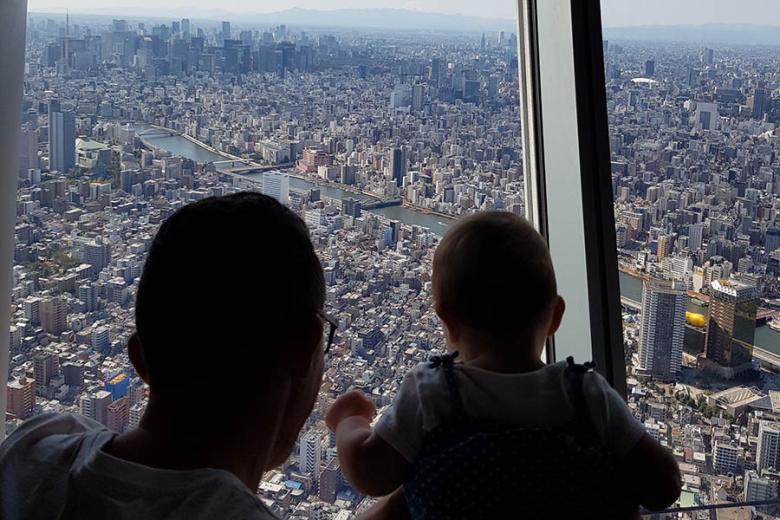
Hakone and Mount Fuji
On day 4, we caught a local train to the town of Odawara, about an hour south of Tokyo, which is where we based ourselves for our visit to Mount Fuji. It’s a good place to stay as from here you can also catch a bullet train direct to Kyoto (our next destination). I recommend that you buy your onward train ticket in advance as trains do fill up.
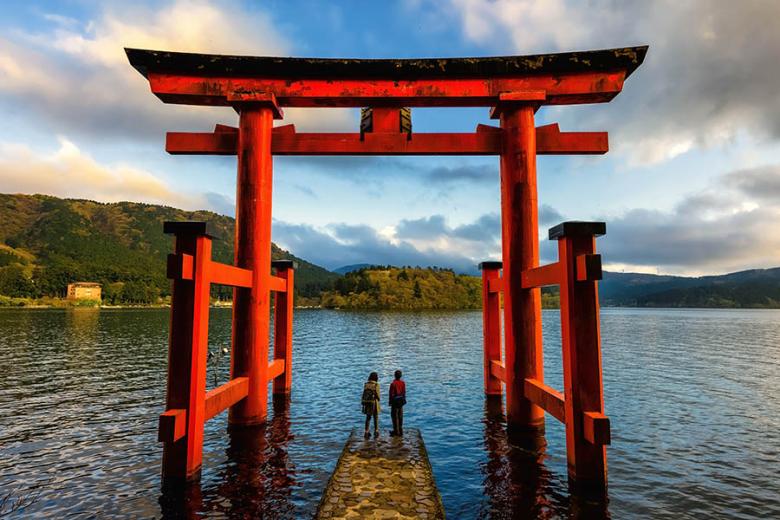
If you have one or two days to discover the area around Mount Fuji, I highly recommend purchasing the Hakone Freepass. As well as giving you discounts on excursions, it allows you unlimited access to all transport in the region. There is a recommended loop you can follow to visit all of Hakone’s main attractions and viewing points of Mount Fuji. You will travel by train, on a cog railway, a cable car, by boat and by bus. All are very child-friendly and travelling with a pushchair wasn’t a problem.
Hakone and the surrounding towns are also one of the best places to visit a traditional Japanese Onsen (natural hot springs bath). I must say this wasn’t very practical for us with a 9-month-old, but if you have an extra pair of hands or your children are a little older, it really is a must-do activity.
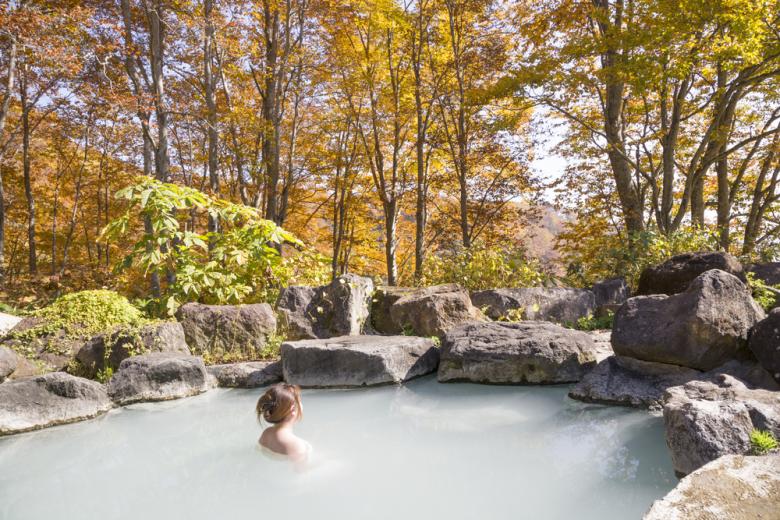
Kyoto
You could spend a week in Kyoto and still not see half of what this city has to offer. We only had a few days and wanted to visit the city of Nara too, so we had to plan our stay and decide what to see carefully.
Kyoto is the ancient capital of Japan and is famous for its numerous temples, shrines, gardens and palaces. On our first day, we headed to arguably the most impressive of them all, Kinkaku-Ji, a beautiful golden temple on the edge of a small lake. Next up was the tranquil Zen garden of Ryoan-Ji, before finishing off the day with a walk through the spectacular Arashiyama Bamboo Forest.
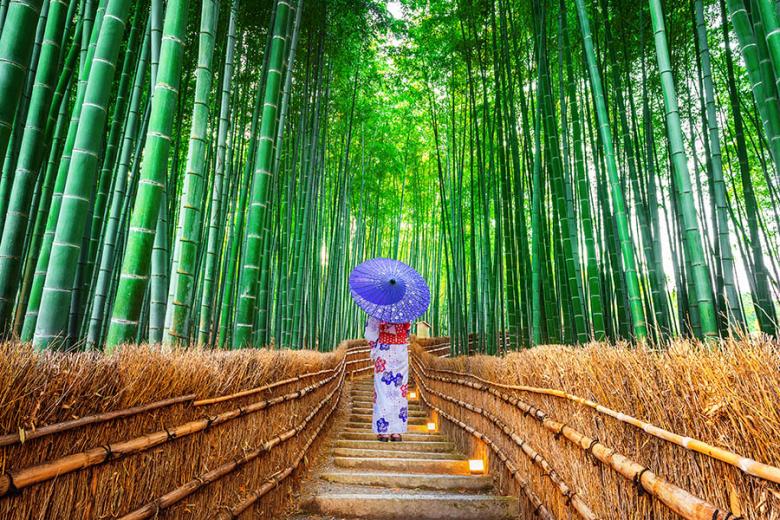
We started the following day with breakfast on the go at the Nishiki Market, a paradise for food lovers. We then crossed the river to the famous Geisha district of Gion and wandered up to the Buddhist temple of Kiyomizu-Dera, which has fantastic views across the whole of Kyoto. All of this was quite easy on foot, even with a pram or baby carrier, and there were plenty of places along the way to stop for a drink or a rest.
Nara
The next day we went to the beautiful city of Nara, famous for the hundreds of wild deer that roam Nara Park. It is just a short 30-minute train journey from Kyoto, and on arrival, we headed straight to Nara Park to see the deer.
Our daughter loved it and spent most of the time chattering away and shouting with glee every time she saw a deer! The park is also home to the very impressive temple of Todai-Ji, which houses a giant Buddha statue.
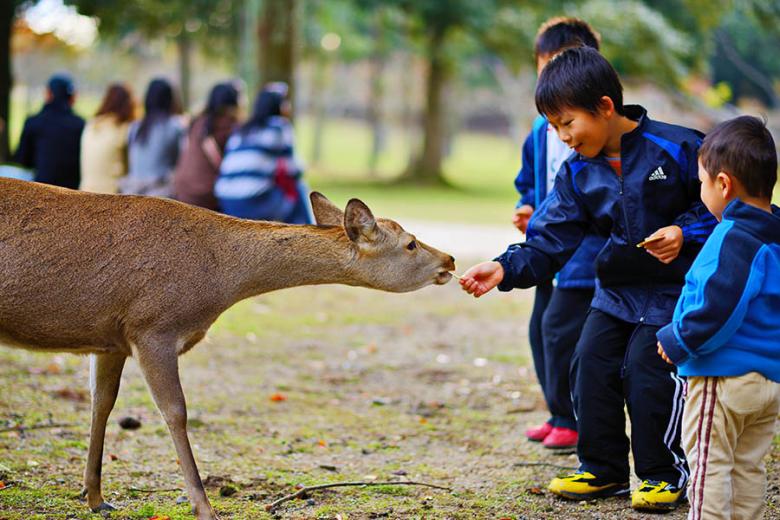
Osaka
Our final stop was Osaka. We only had about 24 hrs in the city, but we managed to see the main highlights within that time. Osaka Castle and the surrounding park are beautiful, and we spent the whole morning exploring the area.
We wandered around the district of Namba for some last-minute souvenir shopping, before finishing off our day in the vibrant area of Dotombori, where we had the best meal of our whole trip. It was a Yakiniku restaurant, a Japanese-style grill where you cook your own meat and vegetables at your table, which is a lot of fun and your little ones will love it (just be extra careful when cooking).
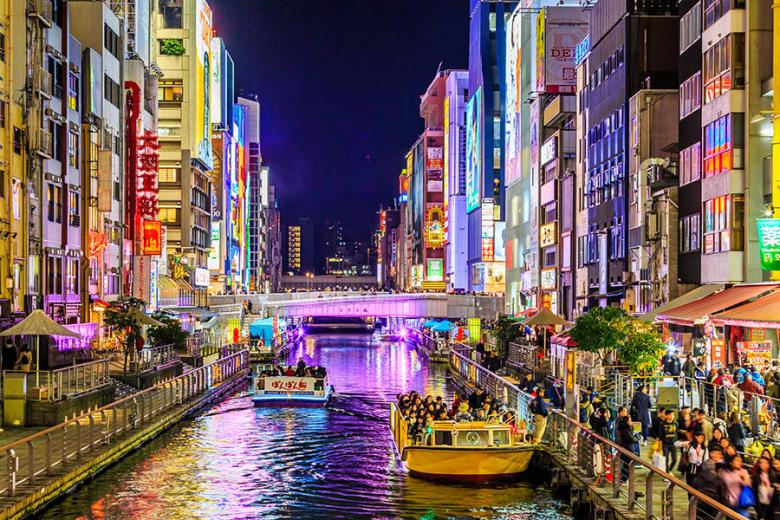
Travelling with a baby – the big differences
It was obviously a very different trip visiting with a baby. We didn’t get to treat ourselves to a meal at a fancy restaurant, sip cocktails in a rooftop bar or get tickets to a show. But the people we met and experiences we had (solely because we were travelling with our little bundle of joy!) massively outweighed anything we missed out on.
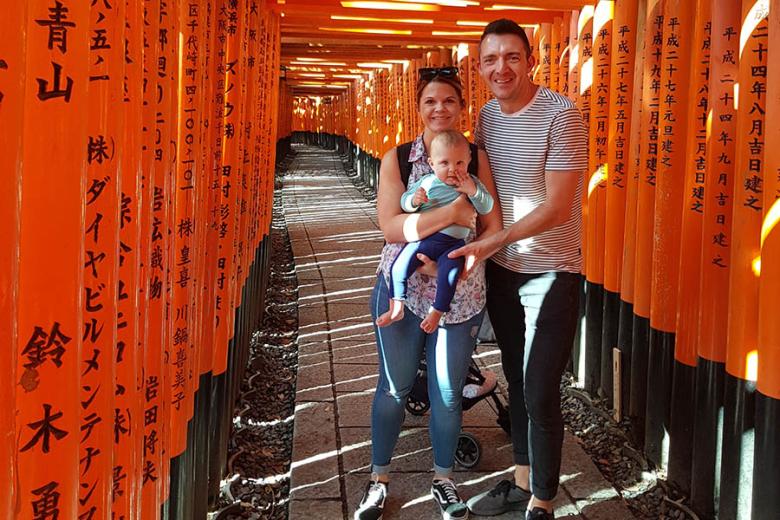
Japan really is unlike anywhere I’ve ever visited before. The culture is fascinating and the architecture stunning. But above all, the people really made the trip one we will never forget. They were all just so friendly, smiley and chatty. Even if they spoke no English, as we spoke virtually no Japanese, we still managed to converse a little. Everywhere we went, we heard the word ‘Kawaii’, meaning cute in Japanese. The locals were just fascinated by our baby daughters’ big blue eyes and pale skin.
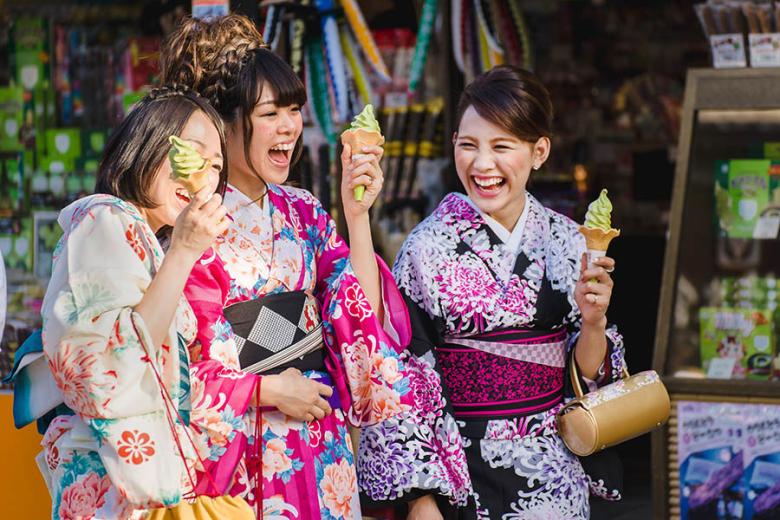
Interested in visiting Japan with a baby?
A 2 week trip to Japan was never going to be enough to explore the whole country so I know I’ll be going back again one day. With a little more time, I would have visited the Japanese Alps to the north-west of Tokyo, the island of Hokkaido in the far north with its beautiful vistas and volcanoes, and the sub-tropical islands of Okinawa in the far south for a little relaxation and beach time!
If you’re planning a trip to Japan with a baby, we can give you some advice and help you arrange every aspect of your trip, from direct or multi-stop flights to transfers, accommodation, tours and excursions. Take a look at our Japan travel guide and top 10 things to do for some inspiration and call Travel Nation on 1273 320 580 or request a quote by email.
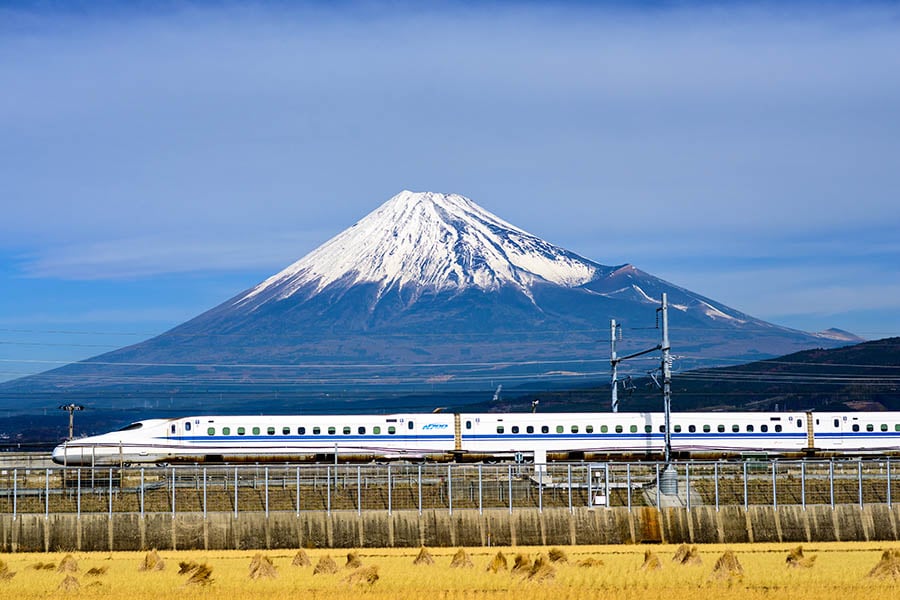
Only in Japan: 16 undeniably brilliant things you'll only find here
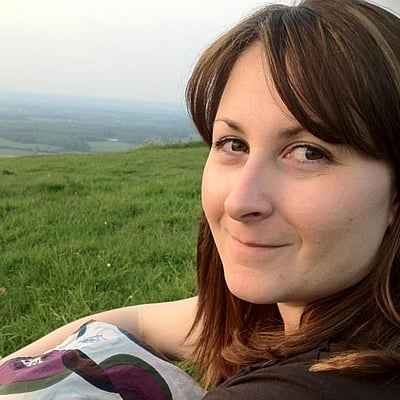
George Mirabelli-Montan
Travelling friend
at Travel Nation
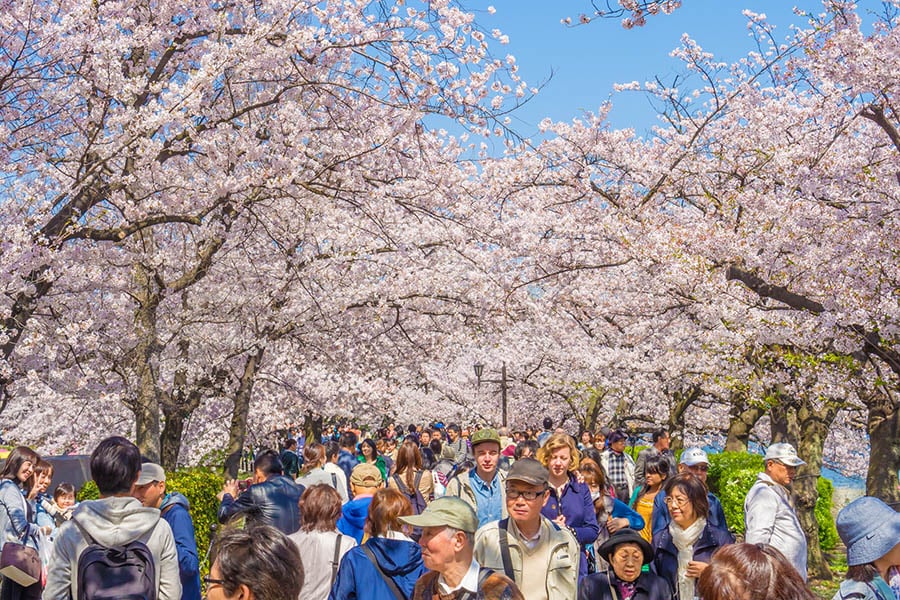
How to see Japanese cherry blossom season

George Mirabelli-Montan
Travelling friend
at Travel Nation
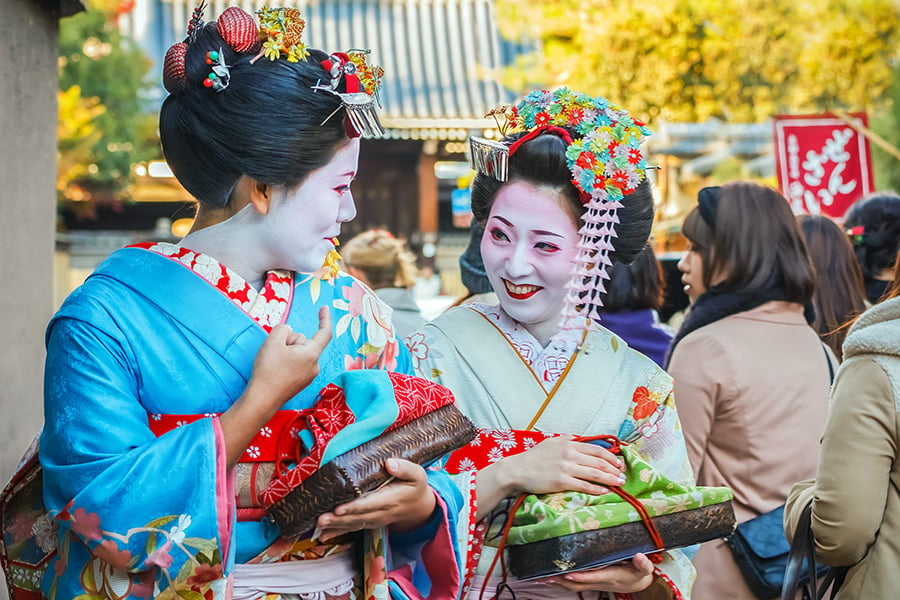
Travelling around Japan: a cultural paradox
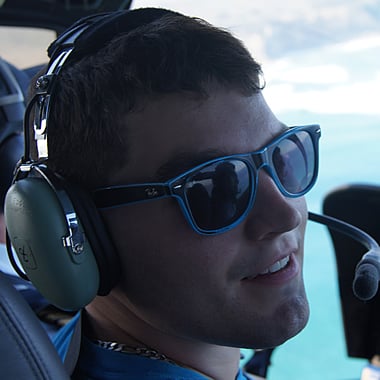
Evan Reardon-Smith
Travelling friend
at Travel Nation

About the author Jeremy Bull
Travelling friend
Beginning his travels in 2003 after a Marine Geography degree, Jeremy plunged in feet first and chose 2 months in India as his first stop. After conquering his culture shock, he felt ready to take on the rest of the world from south east Asia, Australia, NZ Fiji and the USA. Returning home he set to work planning his next trip to China, Indochina and South America. He joined Travel Nation in 2012 after 2 years at our sister company as a South America specialist. When not baking incredible cakes, going for a run or planning his next trip with his wife, Jeremy currently works in our Finance team.

